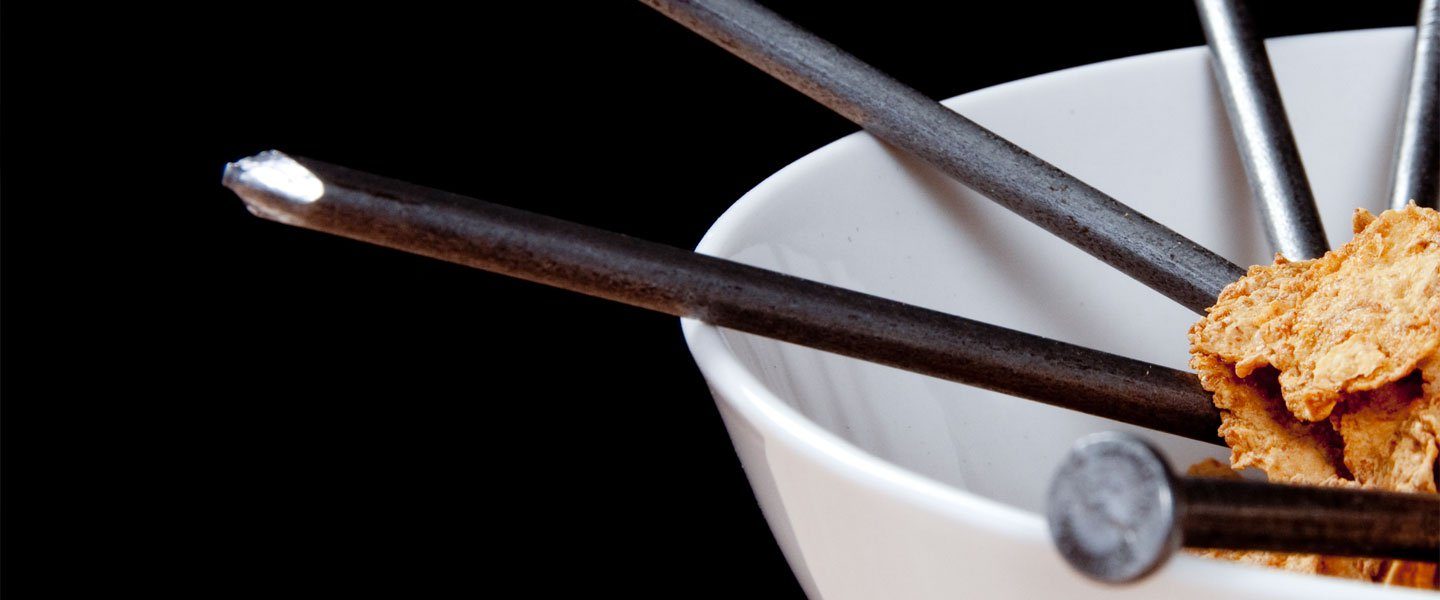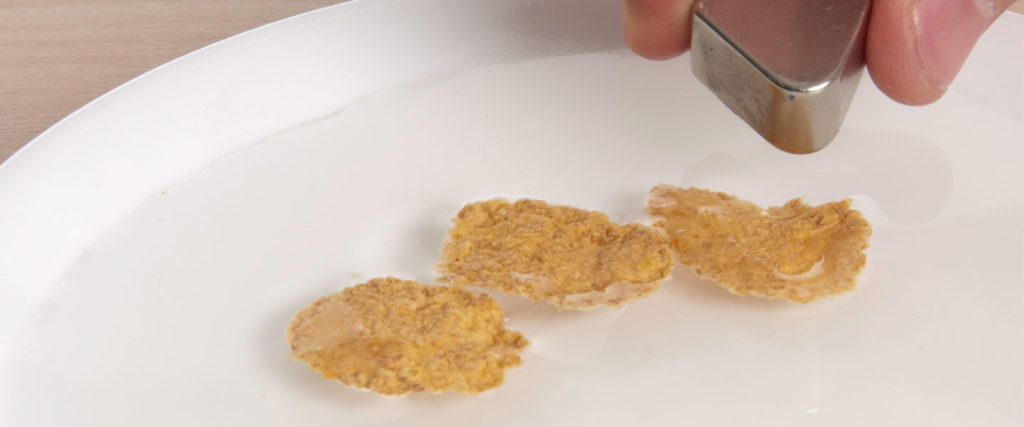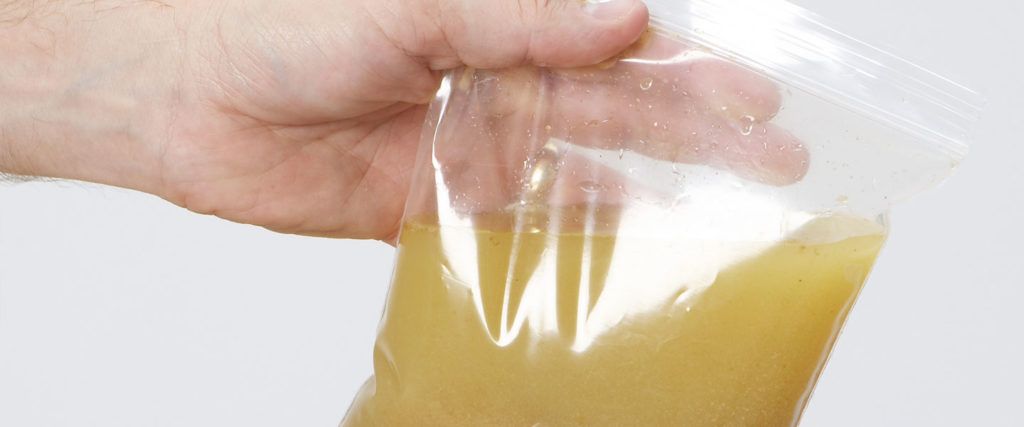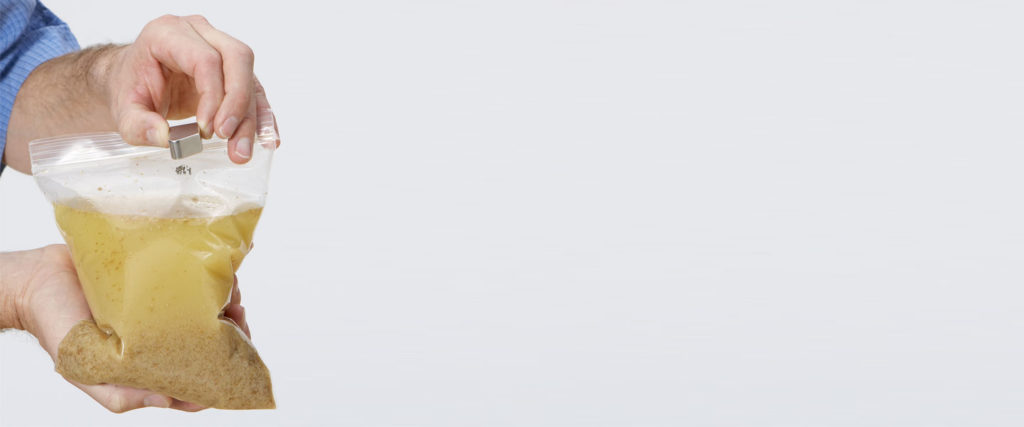Magnetic Money
It’s true, money is magnetic! You’ll need to get your hands on a super strong neodymium magnet to uncover an amazing secret.

Did you know that you can use a magnet to prove there really is iron in your breakfast cereal? The next time you’re eating a big bowl of breakfast cereal, take a closer look at the ingredients. You’ll find that your cereal contains more than just wheat and corn. Look closely and you might find iron, the metal used to make nails. Here’s an experiment to see if there really is metallic iron in your breakfast cereal. All you need is a magnet strong enough to separate the meal from the metal.
Open the box of cereal and pour a small pile of flakes on the plate. Crush them into tiny pieces with your fingers. Spread out the pile so it forms a single layer of crumbs on the plate. Bring the magnet close to the layer of crumbs (but don’t touch any) and see if you can get any of the pieces to move. Take your time. If you get a piece to move without touching it, that piece may contain some metallic iron.
Press the magnet directly onto the crumbs but don’t move it. Lift the magnet up and look underneath to see if anything is clinging to the magnet. Several little pieces may be stuck there. It could be the iron. Throw away the small pile of cereal and clean off your magnet in order to move on to the next step.

Pour a little water onto the plate and float a few large flakes on the surface. Hold the magnet close to (but not touching) a flake and see if the flake moves toward the magnet. (The movement may be very slight, so be patient and look carefully.) With practice, you can pull the flakes across the water, spin them, and even link them together in a chain. Hmm… there must be something that’s responding to the magnet. Could it be metallic iron in your cereal?
Now, you need to open a quart-size zipper-lock bag and measure 1 cup of cereal (that’s equal to one serving according to the nutritional information on the side of the cereal box) into the empty bag. Fill the bag one-half full with warm water and carefully seal it, leaving an air pocket inside.

Give the cereal and water a good mixing by shaking the bag around for a minute or so. The warm water will start to dissolve the flakes of cereal and the liquid will turn into a brown, soupy mixture. Allow the mixture to sit for at least 20 minutes before moving on to the next step.
Make sure the bag is tightly sealed and hold it flat in the palm of your hand. Place the strong magnet on top of the bag. Put your other palm on top of the magnet and flip your hands over so that the magnet is underneath the bag. Slowly slosh the contents of the bag in a circular motion for 15 or 20 seconds. The idea is to attract any free-moving bits of metallic iron in the cereal to the magnet.

Now, flip the bag and magnet over so the magnet is on top. Gently squeeze the bag to raise the magnet a little above the cereal soup. Don’t move the magnet just yet. Look closely at the edges of the magnet where it’s touching the bag. You should be able to see tiny black specks on the inside of the bag around the edges of the magnet. That’s the iron!
Keep one end of the magnet touching the bag and move it in little circles. As you do this, the iron will gather into a bigger clump and become much easier to see.
Many breakfast cereals are fortified with food-grade iron (chemical symbol: Fe) as a mineral supplement. Metallic iron is digested in the stomach and eventually absorbed in the small intestine. If all of the iron from your body were extracted, you’d have enough iron to make two small nails.
Iron is found in a very important component of blood called hemoglobin. Hemoglobin is the compound in red blood cells that carries oxygen from the lungs so it can be utilized by the body. It’s the iron in the hemoglobin that gives blood its red appearance.
A diet without enough iron can cause you to be tired, catch diseases more easily, and make your heart and breathing rates too fast. Food scientists say that a healthy adult requires about 18 mg of iron each day. As you can see, iron plays a very important part in maintaining a healthy body.
Please note that there is a difference between metallic iron and nutritional iron found in natural foods such as spinach and red meat. To date there are differences in opinion in the scientific community as to the benefits of foods being fortified with metallic iron, such as Total® cereal.
Discovering that there is metallic iron in cereal is pretty cool, but it isn’t a science fair project, yet. You can create a science fair project by identifying a variable, or something that changes, in this experiment. Let’s take a look at some of the variable options that might work:
That’s just one idea, but you aren’t limited to that! Try coming up with different ideas of variables and give them a try. Remember, you can only change one thing at a time. If you are testing a different brands of cereal, make sure that the other factors remain the same!
Magnets come in all shapes, sizes, and strengths. Ask at your local hardware store for a strong magnet for a science experiment. The strongest magnets in the world are called neodymium, or “rare-earth,” magnets. They are ten times stronger than standard ceramic magnets and are commonly used in speakers and computer disc drives. It is possible to pull the iron out of cereal using a standard magnet, but you’ll get much better results using a neodymium magnet.